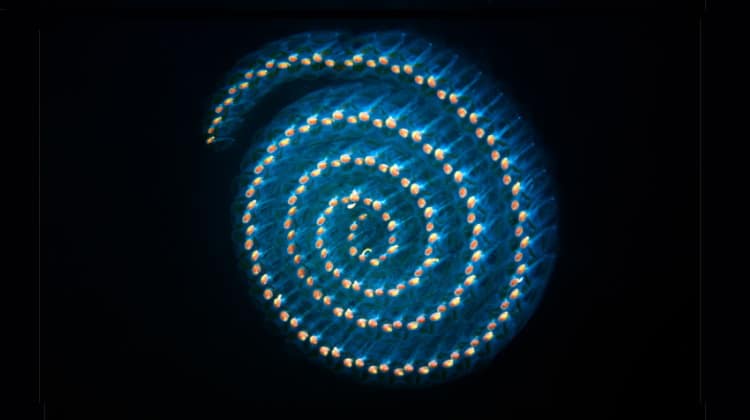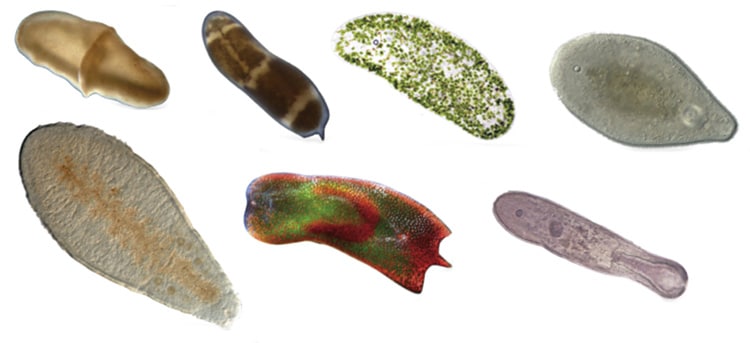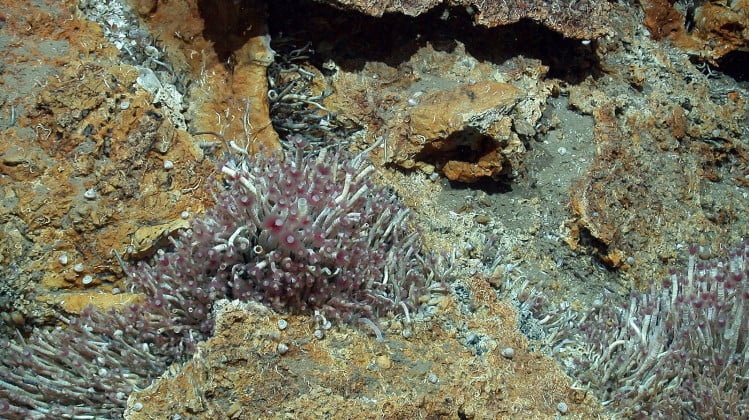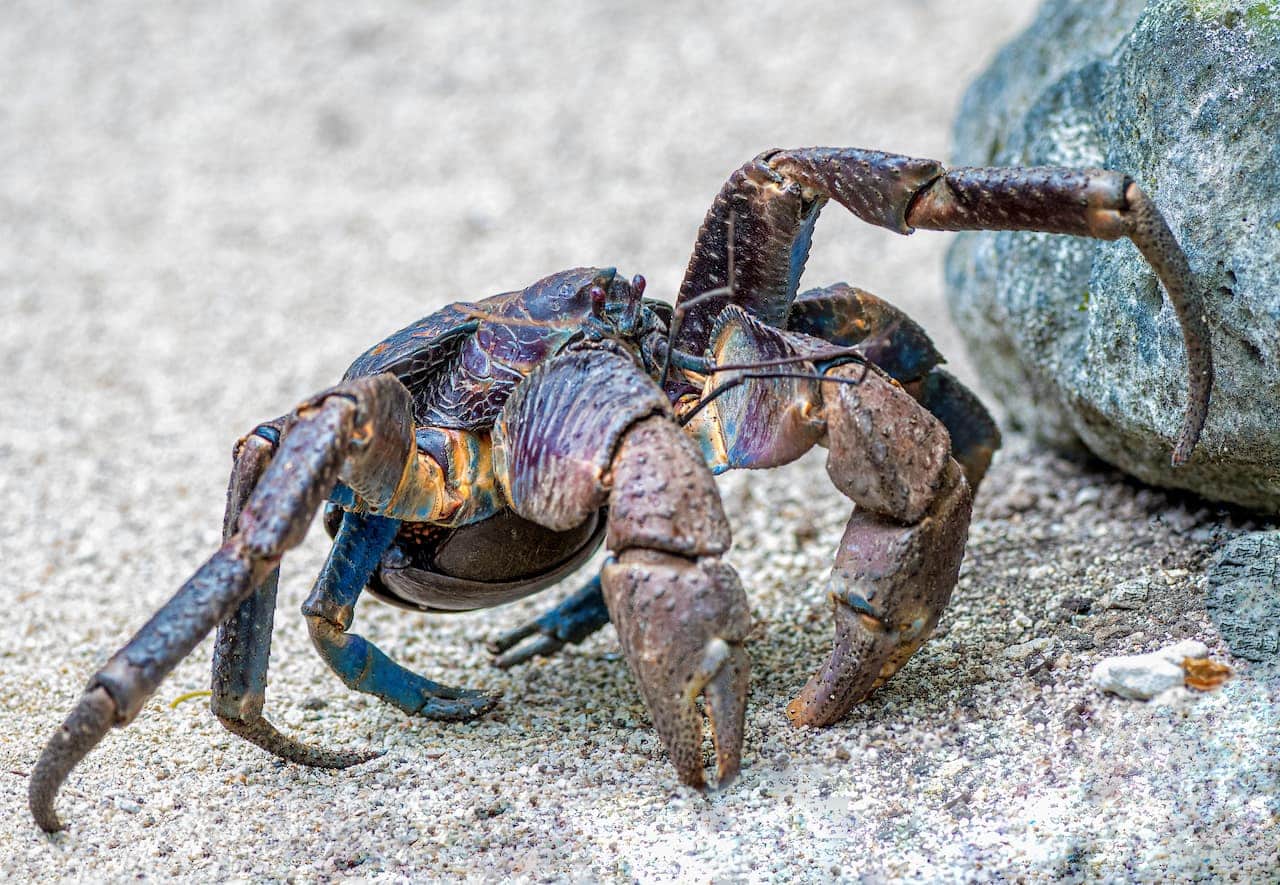Annelida: The Amazing World of Earthworms & Marine Worms
Etymology of Annelida:- From the Latin Annellus, a little ring.
Characteristics of Annelida:
- Bilaterally symmetrical and vermiform.
- Body has more than two cell layers, tissues and organs.
- Body cavity is a true coelom, often divided by internal septa.
- Body possesses a through gut with mouth and anus.
- Body possesses 3 separate sections, a prosomium, a trunk and a pygidium.
- Has a nervous system with an anterior nerve ring, ganglia and a ventral nerve chord.
- Has a true closed circulatory system.
- Has no true respiratory organs.
- Reproduction normally sexual and gonochoristic or hermaphoditic.
- Feed a wide range of material.
- Live in most environments.
Welcome to the Amazing World of the Annelida!
The Annelida are a medium sized phylum of more than 14,000 species of named worms. There are also estimated at least 3,000 species collected waiting to be classified
Most species prefer aquatic environments, but there are also a number of well know terrestrial species.
Only a few species of annelids are commonly known to human beings. These include the delightful Rain, Dew or Earthworms that work so hard to make our soils healthy. The Ragworms and Lugworms, used by marine fishermen and the much smaller Tubifex or Red worms, used by aquarists to feed their fish.
In many countries people are still familiar with Medicinal leeches and people who live closer to nature are naturally more familiar with a much wider range of Annelids than those who live in cities.
Despite the amazing and delicate beauty of polychaetes – such as the Fan Worms – and the huge (really beyond estimation) economic debt owed by mankind to the Oligochaete Earthworms for their work in soil creation and maintenance, many people still fail to appreciate their true wonder and beauty.
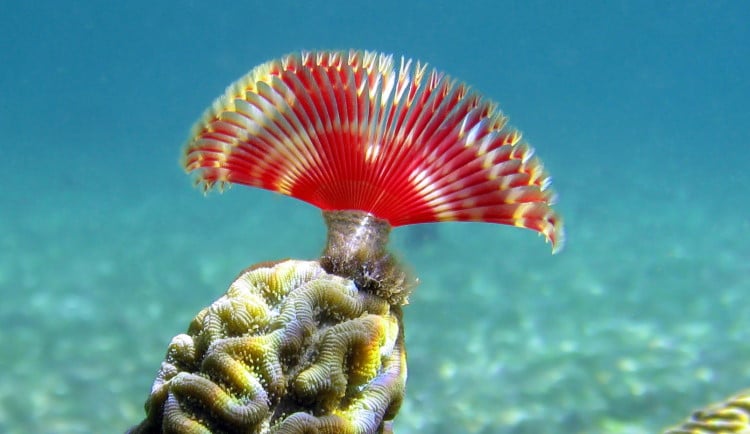
The earthworms – of which there are many species – are exceedingly important in soil creation, particularly in temperate areas. Without them, agriculture- and perhaps the whole of human society as we know it – would never have evolved.
Like so much of the unnoticed invertebrate world, earthworms are essential to our very existence. In marine environments, the numerous species of Polychaetes play a fundamentally important role in the maintenance of food chains and the whole ecological balance of the seas – thus supporting the seemingly endless stocks of fish we like to eat.
A Note On Worm Charming
One of the strangest ways that humans relate to Annelids is in the hobby of ‘Worm Charming’.
This involves enticing earthworms from their holes (catching them).
Originally it was a means of acquiring worms for bait, but now-a-days it is a sport.
The world record – as far as I know – is held by Tom Shufflebotham who charmed 511 worms from their underground hideouts from an area of 3 square metres in only 30 minutes, during the 1980 Annual Worm Charming Championships held in Cheshire UK.
The rules specify that the worms must be brought to the surface without using refreshment, stimulation, drugs or digging. Tom used a method called twanging which involves sticking a 4-pronged pitchfork into the ground and twanging it.
Annelida Morphology & Anatomy
Annelids range in size from the Giant Earthworms, of which Michrochaetus rappi (Michrochaetus michrochaetus) is the largest.
This magnificent animal has an average length of 1.36 m (54 ins) and a record breaking specimen has been recorded that measured 6.7 metres (22 ft) in length, it was 2cm (0.8 ins) in diametre. Larger worms have been reported but not scientifically proven.

The smallest Annelid known to science is Chaetogaster annandalai which is full grown at 0.5 mm (0.02 ins).
Annelids have two main modes of existence, they either live rather quietly in holes or they live more active lives.
The basic Annelid body plan is one of a head followed by a long thin body of numerous similar segments, ending in a small tail. The head consists of a mouth (prostomium) and sometimes a peristomium. The tail is more correctly called a pygidium, as it is not really a tail.
They have sets of chaetae attached to each body segment and these can be simple and small, as in the Earthworms, or complex and varied as in many Polychaetes. The head is often reduced and difficult to distinguish in the hole-living species, but may be easily recognised (with eyes and other sensory devices) in those species living a more active life.
Annelids are coelomate animals (meaning they have a true coelom, even if this is reduced secondarily).
They normally have long thin bodies, composed of a series of identical segments. These segments lie between the head, comprised of a prostomium, a mouth, sometimes a peristomium and a tail called a pygidium.
Growth occurs both laterally, by enlargement of the segments during the juvenile stages, and through the addition of new segments. New segments are produced by the foremost section of the pygidium.
In some species they are produced throughout the animals life, but in many species production stops once a certain set number of segments has been achieved.
Annelida Conservation
The distribution and populations of most the Annelida is not well known, however the 2000 IUCN Redlist includes two species under its critically endangered category:
- Mesonerilla prospera
- Phallodrilus macmasterae
And four species in the vulnerable category:
- Driloleirus americanus (Washington Giant Earthworm)
- Driloleirus macelfreshi (Oregon Giant Earthworm)
- Komarekiona eatoni (Giant Earthworm)
- Megascolides australis (Gippsland Giant Earthworm)
Another 145 species of annelids including the Medicinal Leech Hirudo medicinalis and the Palolo Worm Eunice viridis are also suspected of being in need of conservation, however too little is actually know about their populations for them to be included in the IUCN lists.
For more information from the IUCN Red Data Books see their Searchable Database.
Annelida Classification
As in so many animal groups the classification of the Annelida is under serious revision as research is ongoing. There have been a number of changes since I first wrote this page in AD 2,000. As of the present (February 2021) the classification is listed as below at the taxonomic database website Catalogue Of Life
-
Phylum Annelida • 14,399 to 17,388 living species
- Class Clitellata • 2,635
- Order Arhynchobdellida • 50 living spp
- Order Branchiobdellida • 150 living spp
- Order Capilloventrida • 6 living spp
- Order Crassiclitellata • 195 living spp
- Order Enchytraeida • 358 living spp
- Order Euhirudinea • 1 living spp
- Order Haplotaxida • 1,497 living spp
- Order Lumbriculida • 227 living spp
- Order Opisthopora • 38 living spp
- Order Rhynchobdellida • 110 living spp
- Order Not assigned • 2 living spp
- Class Polychaeta • 11,764 living spp
- Order Amphinomida • 208 living spp
- Order Echiuroidea • 172 living spp
- Order Eunicida • 1,375 living spp
- Order Phyllodocida • 4,570 living spp
- Order Sabellida • 1,429 living spp
- Order Spionida • 666 living spp
- Order Terebellida • 1,721 living spp
- Order Not assigned • 1,623 living spp
- Class Clitellata • 2,635
In comparison here is the higher classification from WORMS (World Catalogue of Marine Species)
-
Phylum Annelida (13 330)
-
Class Clitellata (1 028)
- Subclass Hirudinea (151)
- Subclass Oligochaeta (877)
- Class Polychaeta (12 105)
- Subclass Aciculata accepted as Errantia
- Subclass Echiura (173)
- Subclass Errantia (6 256)
- Subclass Polychaeta incertae sedis (334)
- Subclass Sedentaria (5 342)
-
Class Polychaeta
Polychaeta (Poly = many, Chaeta = bristle) are the most diverse and most speciose group of the Annelida, containing over 5,500 species.
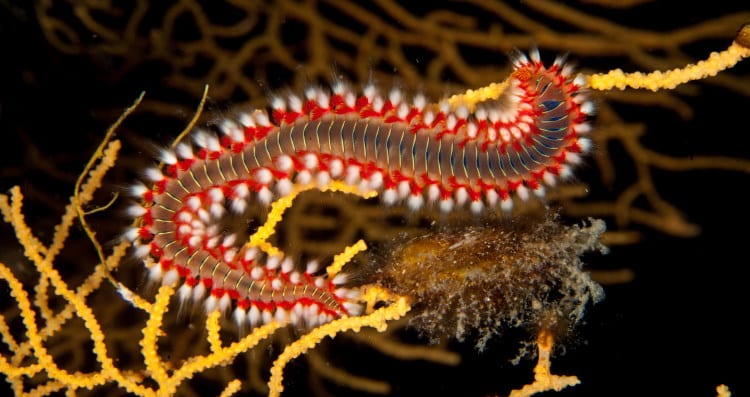
They are predominantly marine animals and are divided ecologically into the Errantia and the Sedentaria, depending on whether or not they live sedentary lives in holes or live more active lives. We now know that this is not a taxonomically valid classification, but it is useful as it divides the class in two – in terms of the number of families each group contains.
The Errantia have well developed heads and complex parapodia (paddles) that they can use for swimming. They are often dorsoventrally flattened.
Most polychaetes are gonochoristic (meaning they are either male or female), however some are sequential hermaphrodites (meaning they are one sex first and then change to being the other sex).
Reproduction is often accompanied by the production of special modified reproductive segments which may – or may not – become independent of the parent worm before mating. These segments are destroyed or die during or immediately after they have released their gametes (sperm and ova).
The Aelosomata
The Aelosomata is no longer considered to be a valid taxon above family level. It contains about 25 species of small to minute worms with many chaetae.
They live in the interstitial zone of both fresh and brackish water environments. They are hermaphrodites with each animal possessing one ovary and two testis. They are little known to science and their classification is disputed, with some authors considering them to be part of the Oligochaeta.
Class Clitellata
The class Clitellata contains three distinct groups.
Subclass Oligochaeta
The Oligochaeta is not recognised as a valid taxon by COL, as they do not list Subclasses, however it is generally accepted in many other places such as WORMS.
Oligochaeta (Oligo = few, Chaeta = bristle) are the second most numerous group of annelids, with around 3,100 species.
Oligochaeta live in marine, freshwater and terrestrial habitats. Generally they have a more rounded cross-section, a less distinct head and are less diverse in form than the Polychaetes.

They are normally hermaphrodites and possess a clitellum as adults, an organ which looks like a bandage of skin wrapped around the animal. This clitellum, from which the whole group takes its name, has an important function in sexual reproduction – otherwise reproduction may be asexual by fission.
A few species are parasitic but most species are free living.
Subclass Branchiobdella
Branchiobdella contains 147 species of small (about 1 cm long) aquatic whitish animals, that are either commensals or parasites on Crayfish.
They are mostly found in the northern hemisphere.
Different species attach to their hosts at different places on the body, thus Branchiobdella parastica attaches to the under side of the abdomen while Branchiobdella astaci attaches to its hosts gills.
Branchiobdella hexodonta and B. astaci are known to be parasitic feeding off host tissue, but B. parasitica is thought by some authorities to be a commensal.
Subclass Hirundinea
Hirundinea contains the 500 or so species of animals commonly known as leeches.
Leaches are well known for their blood sucking habits and their head-to-tail looping mode of locomotion.
Except for the primitive Acanthobdella peledina, leeches have no chaetae and 33 body segments. They have two suckers, which in most cases are located one at the anterior (head) end of the body composed of segments 1-4 and the other at the posterior (tail) end composed of segments 25-33.
Like the Oligochaeta from – which they are believed to have evolved – the Hirundinea occur in Fresh water, marine and terrestrial environments.
Classification of the Annelida
Like the classification of all living things, the classification of the Annelida is under revision by experts and the current beliefs of scientists are only theories not facts. Different schemes may be put forward as we acquire more knowledge.
However the scheme I have laid out below (which comes from “Annelids” by R. Phillips Dales and “The Invertebrates” by Barnes, Calow and Olive) represents a general consensus of opinion and will be satisfactory for anyone not actually studying Annelid taxonomy and classification.
You can also check out Tolweb for more detail on this.
Table of Annelida Classification
| Class | Subclass | Order |
|---|---|---|
| Polychaeta | Orbiniida | |
| Ctenodrilida | ||
| Psammodrilida | ||
| Cossurida | ||
| Spionida | ||
| Questida | ||
| Capitellida | ||
| Ophelliida | ||
| Phyllodocida | ||
| Amphinomida | ||
| Spintherida | ||
| Eunicida | ||
| Sternaspida | ||
| Oweniida | ||
| Flabelligerida | ||
| Poeobida | ||
| Terebellida | ||
| Sabellida | ||
| Nerillida | ||
| Dinophilida | ||
| Polygordiida | ||
| Protodrilida | ||
| Myzostomida | ||
| Aelosomata | Aelosomata | |
| Clitellata | Oligochaeta | Lumbriculida |
| Moniligastrida | ||
| Haplotaxida | ||
| Branchiobdella | Branchiobdella | |
| Hirudinae | Acanthobdellida | |
| Rhynchobdellida | ||
| Arhynchobdellida |
Learn More
Well, I hope this page has been an interesting introduction to the annelids!
The Phylum Annelida now also includes the old phyla Echiura and Pogonophora
But there’s still much more to learn, check out the pages below:
Earthworm image: License Creative Commons

